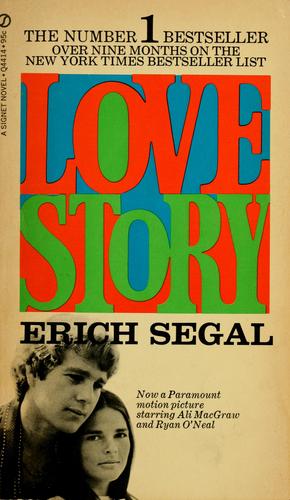This Labor Day was doubly supposed to be a holiday for Your West Coast Oenophile. As happens every five or six years, my birthday falls on the first Monday in September, and while this was not a milestone year for me, it did add to the usual significance of the annual rite of passage (for the chronological sleuths out there, my only hint is that the next occurrence of this overlap will echo a sappy Paul McCartney tune). But instead of devoting the three day holiday to an inexorable celebration, I found myself on Sostevinobile duty, headed north for a return, at long last, to Sonoma County’s Wine Country Weekend.
I would be hard-pressed to think of another wine festival that encompasses such an expansive panorama of what its county-wide AVA offers, not just in wine but its complementary cuisine, food offerings, and other agricultural forays. Even Flavor! Napa Valley, a truly comprehensive cross-section of Sonoma’s immediate neighbor, seems somewhat dwarfed by the sheer magnitude of this three-day event.
My invitation included the Grand Tasting at MacMurray Ranch and the Sonoma Starlight dinner the preceding night. I had last visited Francis Ford Coppola Winery in its incarnation as Souverain, back during my years advising Bacardi on winery purchases they never completed. Under the Coppola umbrella, this facility, which produces the bulk of his mid-range and popular selections, has transmogrified into a lavish, if not grandiose, reflection of his directorial style, an estate that is as much resort as it is a producing winery, not unlike Bernardus in Carmel Valley.
Friday night attendees were fêted with an array of buffet food tables, gourmet poolside fair from a selection of local culinary vendors, while the patio was aligned with tables from many of the select wineries scheduled to pour the next day. Here, however, the vastly smaller VIP crowd enjoyed easy access to the wines and the winemakers themselves, along with a handful of reserve pourings that would not be featured at the public event. Even with the undulating strains of Notorious, Sonoma’s answer to Big Bang Beat, permeating the chill of the evening air, intimate conversations with the winemakers seemed effortless, allowing me the opportunity to meet and mingle with most of the participants I had highlighted as must-visits for the weekend.
One of the most intriguing of my new discoveries was Trinité Estate, the Alexander Valley expansion of the Lurton family’s vast portfolio of wineries that include Château Durfort-Vivens, a Deuxième Grand Cru Classé estate in the Margaux region, Château Ferrière, Château Haut-Bâges Libéral, Château La Gurgue, and Château Domeyne. True to form, owners Gonzague and Claire Lurton produce remarkable Bordeaux-style wines from their Healdsburg vineyards, notably their flagship 2012 Acaibo, a blend of 53 percent Merlot and 46 percent Cabernet Sauvignon, with “a sprinkling” of Cabernet Franc. Young but portending to be perhaps even more prodigious, their 2013 Amaino also focused on Merlot from the same trinity of Bordelaise grapes.
I am intrigued by the notion of wines that bear the same names as cheese, but so far, have only found Pecorino, an Italian white grape that is also produced in Temecula. Coming tantalizingly close, the Russian River Valley’s Parmeson Wines more than competently epitomized the contiguity of this AVA and the Sonoma Coast appellation with their inaugural trio of wines: 2013 Chardonnay Josephine Hill Vineyard, 2013 Pinot Noir Wildcat Mountain Vineyard, and their 2013 Zinfandel Alegría Vineyard.
One late-registered participant I hadn’t previously sampled was Merisi, an understated albeit fledgling endeavor that derives its elusive name from Michelangelo Merisi, better known as the Renaissance chiaroscuro master Caravaggio. Nothing about Mandy and Nick Donovan’s wines, however, seemed dimmed or shadowy, as their opulent 2013 Glen Oaks Vineyard Cabernet Sauvignon amply displayed.
I confess to being often befuddled by the difference between Sonoma Valley Vintners & Growers and Sonoma County Vintners and will not attempt to distinguish these two largely overlapping trade associations, other than to note that the former is the official producer of this event. The latter faced a bit of hasty reorganization earlier this past year with the abrupt resignation of both Director of Marketing Communications Sara Cummings and Executive Director Honore Comfort. Honore, however, hardly extricated herself from the ranks of Sonoma County’s Vintners, with the inclusion of her Brack Mountain Wine Company at this year’s festivities. Under their Bench Wines label, Brack Manager Taylor Osborn poured a noteworthy 2013 Bench Pinot Noir and a truly delightful 2013 Fable Pinot Meunier, a single vineyard designate.
It’s not uncommon for me to taste 4-5,000 wines every year, and even with over 190 varietals produced on the West Coast in Sostevinobile’s database, such a relatively obscure wine is a great pleasure. And herein lies my contention with the Grand Tasting the following day. Don’t get me wrong—it was a wonderful, if not opulent event, and even without having to jockey among 4,000 attendees, one could never possibly have taken in everything it has to offer.
But with over 150 wineries on hand, I would have expected far more to have showcased their non-standard selections—not merely the Sauvignon Blancs, Chardonnays, Pinot Noirs, Zinfandels, and Cabernet Sauvignons that predominate in the Valley. I realize there are vastly more labels produced in the county than this event could possibly accommodate; furthermore, for many of the smaller, cutting-edge producers—Ryme, Agharta, Idlewild, Sheldon, Castelli, Scherrer, Stark, Nico, DaVero, Two Shepherds, Porter-Bass, to name but a few—who seemed conspicuously absent, I suspect participation fees may have proved too steep vs. potential return for the time and resources they would have to expend.
Nonetheless, far better that I focus on who was there and what they poured, rather than further expound my wistfulness over what was absent. Stopping off at the Alexander Valley tent, I first sampled a trio of wines from Lake Sonoma Winery, one of Madrone Vineyards Estates’ holdings. As befits the appellation, their standout proved to be the 2013 Cabernet Sauvignon Alexander Valley, an exceptional expression of both the grape and the AVA. From the other side of 101, both the 2013 Chardonnay Russian River Valley and the 2013 Pinot Noir Sonoma Coast proved rather redolent of what I would expect from this vintage.
Curiously, Lake Sonoma did not pour their 2012 Dry Creek Valley Zinfandel, a wine sourced closest to their namesake destination. Zinfandel’s Italian cousin, however, did make an appearance at deLorimier Winery’s table, a striking 2013 The Station Primitivo. On the other side of the tent, Soda Rock—like deLorimier, one of Diane Wilson’s myriad holdings—featured a more straightforward Zin, their 2012 Zinfandel Alexander Valley, alongside an equally-competent 2011 The General Cabernet Sauvignon.
The burgeoning Wilson empire includes numerous Dry Creek Valley wineries (Pezzi King, Mazzocco, as well as their eponymous label), but within this designation, arguably the crown jewel is the Rockpile AVA, which truly has to be the province of Mauritson Family Winery. Their wines are consistently deep, lush, and intense, a reputation borne out once again here with both the 2012 Rockpile Cabernet Sauvignon Rockpile Ridge Vineyard and the 2013 Rockpile Zinfandel Jack’s Cabin Vineyard. Also pouring a highly impressive Zinfandel—Comstock Wines, with their 2013 Zinfandel Dry Creek Valley.
As with Mauritson, I can always count on Lambert Bridge for consistency and excellence in their Bordelaise varietals and blends, a view reinforced here by their 2012 Cabernet Franc Sonoma County. Still, I was saddened to learn that Greg Wilcox, one of my favorite curmudgeons, no longer managed the winery. On a different front, affable owners Jann and Gerry still operate their namesake Forth Vineyards in Healdsburg, excelling in the production of their 2012 Single Vineyard Sangiovese, along with a delightfully spry 2014 Single Vineyard Sauvignon Blanc.
The broadbased Russian River Valley tent encompassed a number of districts that may soon comprise their own sub-AVA, including Petaluma Gap and Fountaingrove; the representative wineries, however, displayed a greater homogeneity. Endemic of this focus, Christopher Creek Winery, a winery whose acclaim is based on its Petite Sirah, Syrah, and Cabernet Franc, nonetheless impressed with its highly nuanced 2013 Pinot Noir Reserve. Burgundian purists Bucher Vineyard featured its 2013 Pinot Noir Russian River Valley, while my friends Bill and Betty Nachbaur kept things close to the vest with the 2012 Axiom Single Vineyard Syrah from their Acorn Winery, rather than their more adventurous Dolcetto or Sangiovese.
In contrast, the smaller boutique enterprises from Fountaingrove shared a table that showcased their diversity, starting with the excellent 2009 Petite Sirah from Chuck McCoy’s Volante Vineyards. Equally delightful yet paradoxically named—the 2010 Les Trois Rhône Blend from Margaret Foley’s Petrichor Vineyards, a deft marriage of Syrah with 15% Grenache. Atypically focused solely on Merlot and Cabernet Sauvignon, the Heller Family’s H•L•R Cellars furnished an appealing 2012 Cabernet Sauvignon, while their fellow Fountaingrovians, the wonderfully-named Hostage Wines, offer a superlative 2012 Cabernet Franc.
Could a winery name be more vocative than The Calling? This collaboration between winemaker Peter Deutsch and renowned sportscaster Jim Nantz dazzled with their 2012 Cabernet Sauvignon Alexander Valley. Served up by the equally dazzling Summer Jeffus, The Calling also offered their 2011 Our Tribute, a complex yet compelling Meritage of Cabernet Sauvignon, Malbec, Petit Verdot, and Cabernet Franc, along with the 2013 Chardonnay Jewell Vineyard.
With sharply contrasting (obscurant) nomenclature, Ektimo—either meaning alarm in Esperanto or derived from the Greek term for reckon, εκτιμώ—is a nascent venture from Chinese ownership in the Russian River Valley. New winemaking will handle future vintages; here the selection of their 2014 Single Vineyard Chardonnay, the 2013 Pinot Noir Russian River Valley, and the 2013 Cabernet Sauvignon Russian River Valley seemed, at best, modest efforts.
Over in the all-encompassing Sonoma Valley tent, a more representative expression of the varietal could be found in Laurel Glen’s lush 2012 Counterpoint Cabernet Sauvignon. As compelling and as superlative, both the 2013 Chardonnay Durrell Vineyard and the 2013 Pinot Noir Russian River Valley from Will Price’s fabled Three Sticks Wine. Victor Hill Wines, the reemergence of former Castle Winery owner Vic McWilliams, displayed a Phoenix-like deftness with their 2012 Barrel Select Single Vineyard Pinot Noir Bush Vineyard, a wine as big as its name, coupled with their final 2013 Belle Blanc, a most compelling marriage of Marsanne, Grenache Blanc, and Viognier.
My last stop of the afternoon, Bart Hansen’s Dane Cellars, closed out the day with another superb Rhône blend, their 2013 Valeria, a GMS augmented with 8% Counoise. My to-do list had also included Idell Family Vineyards, which regrettably had closed down their station nearly an hour, and Steven & Walker, which failed to appear at all (though I did manage to insinuate myself into their release party in downtown Healdsburg that evening).
Looking over my notes from Wine Country Weekend, it seems I barely scratched the surface with the wineries on hand for Taste of Sonoma. Part of the reason surely was the sheer volume of the attendance, which made jockeying for a winery’s attention more than a challenge; part may have been that I had sampled nearly 90% of these wineries in the past year or two; and part was, most assuredly, the superb selection of food pairings throughout the four tents! As such, my assessment of the breadth of wines served may be skewed. Still I offer these comments not as criticism but a wish that, collectively, the Sonoma winemakers might be more ambitious next time around and truly showcase the vast panoply of what is claimed to be the most diverse wine region in California.



